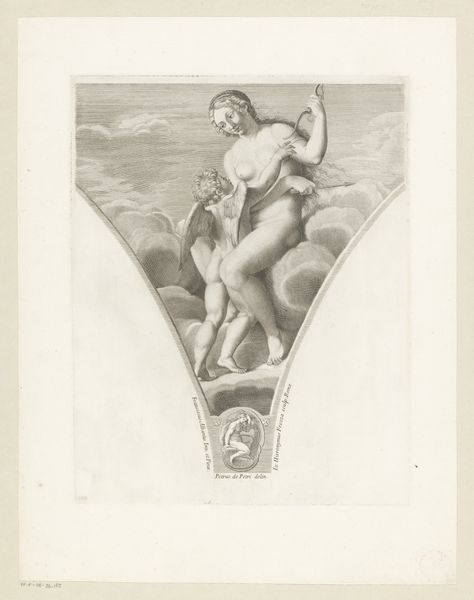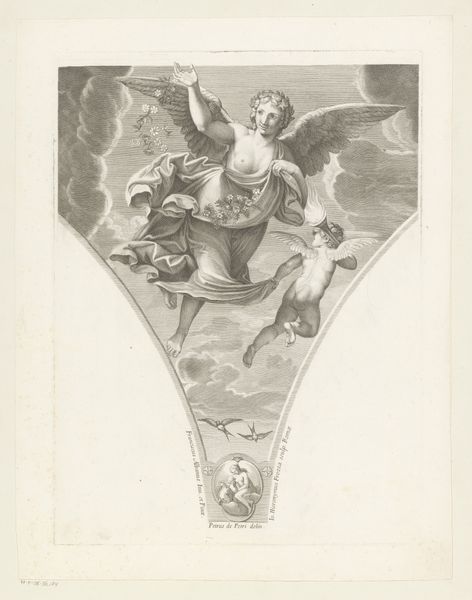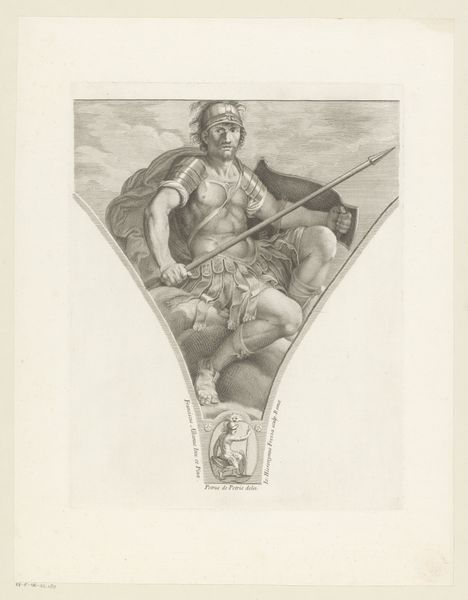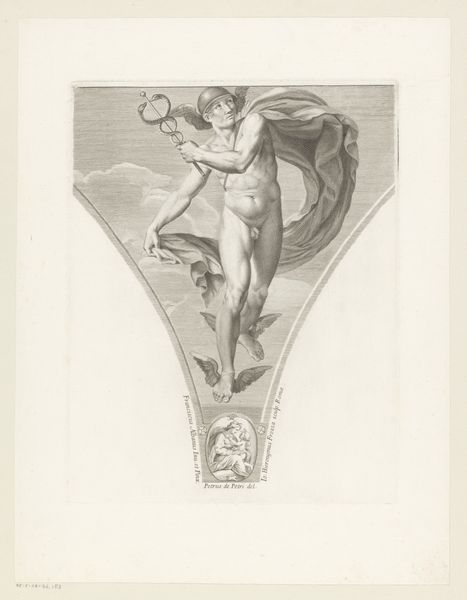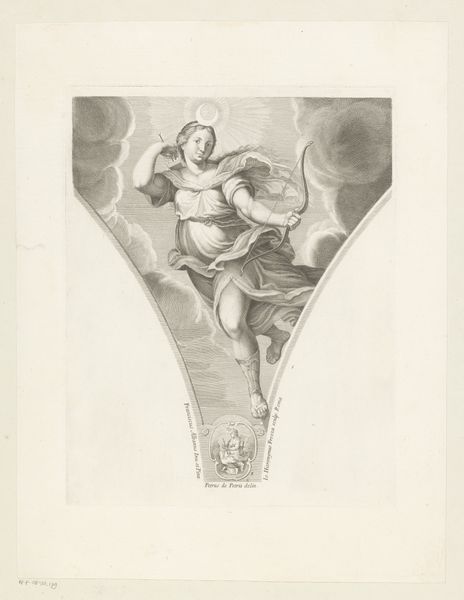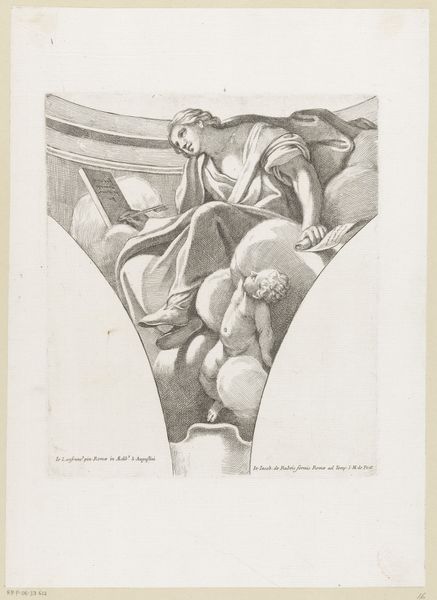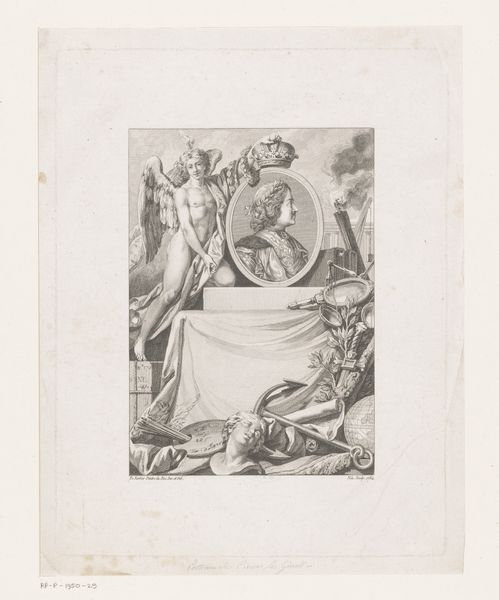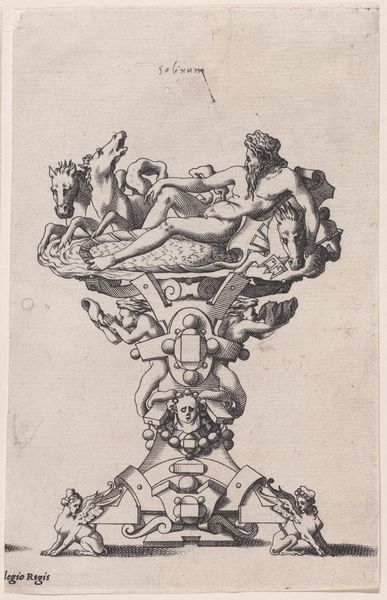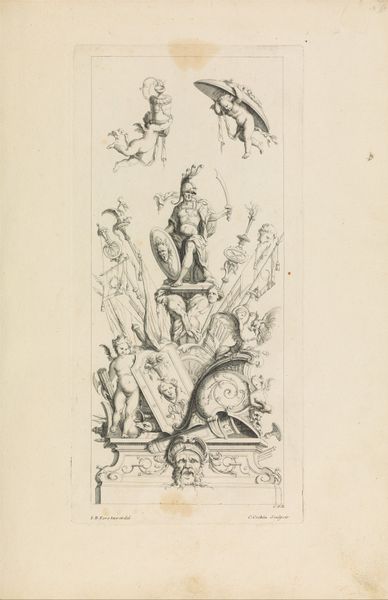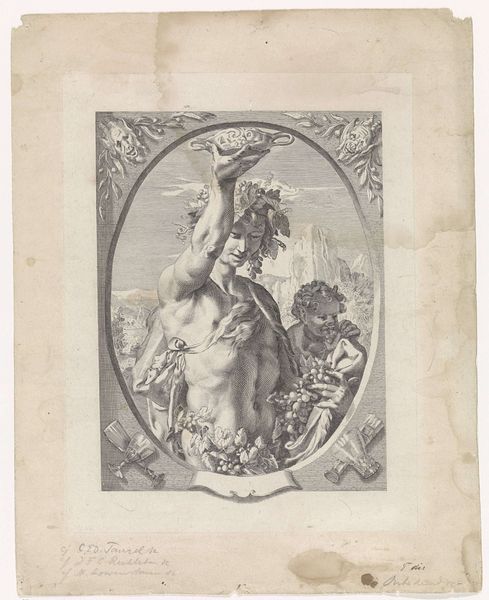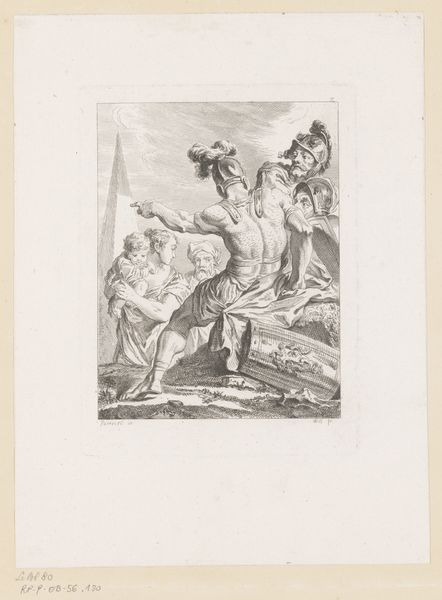
print, engraving
#
portrait
#
allegory
#
baroque
# print
#
old engraving style
#
figuration
#
history-painting
#
engraving
Dimensions: height 359 mm, width 280 mm
Copyright: Rijks Museum: Open Domain
Editor: We're looking at "Jupiter," a 1704 engraving by Giovanni Girolamo Frezza. The image is primarily shades of gray, featuring a bearded man with an eagle at his feet, along with a youthful figure to his left, set against clouds in a semi-circular frame. It strikes me as pensive, almost melancholic. How do you interpret the visual language here? Curator: Observe first the compositional elements. Frezza has created a clear hierarchy, hasn't he? Jupiter, centrally located and physically larger, dominates the pictorial space. His seated pose, the drape of fabric, the positioning of the eagle, all contribute to a sense of classical power. Note the engraver's command of line – it defines form and texture. Consider, too, the engraver's mark: how does this influence our encounter with the mythological scene? Editor: So you're less focused on Jupiter as a symbol of power, and more on how Frezza used lines and composition to represent that power? Curator: Precisely. The medium, engraving, demands a conscious manipulation of line to suggest light, shadow, and texture. Notice how Frezza utilizes hatching and cross-hatching to create depth. What does the tonal range tell us? Does it evoke qualities or associations, beyond the purely representational? Editor: The limited tonal range and defined lines definitely gives the work a sense of restraint, which makes it feel very formal. I find it very clever, how the engraving technique itself reflects a certain stoicism attributed to the god. Curator: An astute observation. Form mirrors content in complex ways. How might Frezza’s decision to depict this allegory as a print further shape its meaning, distribution, or use? Editor: I hadn’t thought of that. It’s not just about *what* is shown, but *how* it’s shown. I'll definitely be more attentive to the artistic techniques and media when I study similar art works. Curator: Indeed. By focusing on the intrinsic elements, we unlock layers of understanding and appreciation.
Comments
No comments
Be the first to comment and join the conversation on the ultimate creative platform.

